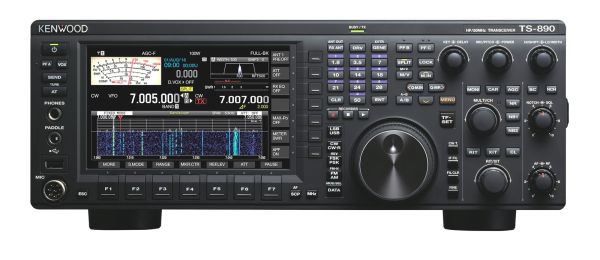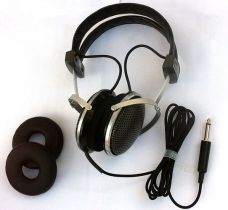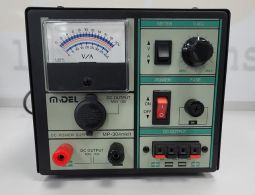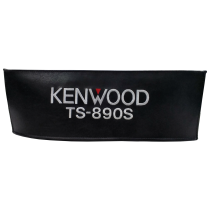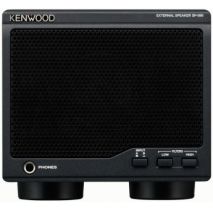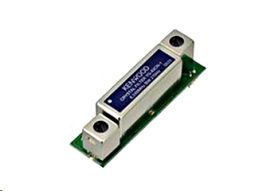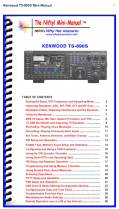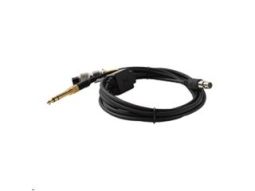We use
cookies and similar technologies
to help give you the best experience on our site and to show you relevant advertising. If you continue to use this site, we’ll assume that you’re happy to receive all cookies
Kenwood TS-890S - FREE Microphone
SKU Part Number:
TS-890S
FREE MC-43 now included. Why purchase from ML&S? We are officially the Sole U.K JVC-Kenwood Distributor & approved Authorised Service...
Read More
Read More
Special Price
£3,999.95
£3,333.29
Regular Price
£4,124.00
Availability: In stock

Seen this product cheaper elsewhere?
Call 0345 2300 599FREE MC-43 now included.
Why purchase from ML&S? We are officially the Sole U.K JVC-Kenwood Distributor & approved Authorised Service Centre for Ham Radio products. We consistently sell more Kenwood in this country than any other retailer, having won yet another "Dealer of the Year" award for 2017-2018. ML&S are the only dealer in the U.K with 4 on-site engineers dedicated to Ham Radio repairs & support. Want peace of mind when buying your new TS-890S? You've come to the right place! Trade-ins welcome just call 0345 2300 599
New for 2020! FREE Kenwood MC-43S fist microphone included in every TS-890S purchase via the web only.
Kenwood's new HF/50MHz/70MHz Base Station masterpiece.
Featuring a full down conversion receiver, built-in roofing filters for 500Hz / 2.7kHz / 6kHz / 15kHz and a 270Hz option.
A full colour 7 inch TFT Display with full band scope.
100W output on HF/50MHz, 50W on 70MHz (Europe version only).![]() Check out the Direct Index for the TS-890S manual
Check out the Direct Index for the TS-890S manual
|
General |
|
|
|
Frequency range (Transmitter) |
160m band |
1.81 ~ 2.0 MHz |
|
80m band |
3.5 ~ 3.8 MHz |
|
|
60m band *1 |
5.25 ~ 5.45 MHz |
|
|
40m band |
7.0 ~ 7.2 MHz |
|
|
30m band |
10.1 ~ 10.15 MHz |
|
|
20m band |
14.0 ~ 14.35 MHz |
|
|
17m band |
18.068 ~ 18.168 MHz |
|
|
15m band |
21.0 ~ 21.45 MHz |
|
|
12m band |
24.89 ~ 24.99 MHz |
|
|
10m band |
28.0 ~ 29.7 MHz |
|
|
6m band |
50.0 ~ 52.0 MHz |
|
|
4m band |
70.0 ~ 70.5 MHz |
|
|
Frequency range (Receiver) |
0.13 ~ 30 MHz, 50 ~ 54 MHz, 70.0 ~ 70.5MHz VFO: Continuous 30 kHz ~ 74.8 MHz |
|
|
Mode |
A1A(CW), A3E(AM), J3E(SSB), F1B(FSK), F3E(FM), G1B(PSK) |
|
|
Frequency stability |
±0.1 ppm, 0 °C ~ +50 °C |
|
|
Antenna impedance |
50 Ω |
|
|
Antenna tuner load range |
16.7 Ω ~ 150 Ω |
|
|
Supply voltage |
DC 13.8 V ±15 % |
|
|
Ground |
Negative ground |
|
|
Current Drain |
TX |
22.5 A or less |
|
RX (No signal) |
2.5 A or less |
|
|
Operating Temperature |
0 °C ~ +50 °C |
|
|
Dimensions |
Without projections |
W396.0 × H141.3 × D340.0 mm |
|
With projections |
W409.6 × H158.3 × D387.4 mm |
|
|
Weight |
Approx. 15.8 kg |
|
|
Transmitter |
|
|
|
Output Power (AM) |
HF/50MHz: Max 100 W / Min 5 W, (Max 25 W / Min 5 W) |
|
|
70MHz: Max 50 W / Min 5 W, (Max 12.5 W / Min 5 W) |
||
|
Modulation |
SSB: Balanced, AM: Low Power, FM: Reactance |
|
|
Maximum frequency deviation (FM) |
wide: ±5 kHz or less, narrow: ±2.5 kHz or less |
|
|
Spurious emissions |
HF: -50 dB or less |
|
|
50 MHz: -63 dB or less |
||
|
70 MHz: -60 dB or less |
||
|
Carrier suppression |
60 dB or more |
|
|
Unwanted sideband suppression |
60 dB or more |
|
|
Transmit frequency response |
Within -6 dB (100 ~ 2,900 Hz) |
|
|
Microphone impedance |
600 Ω |
|
|
XIT variable range |
±9.999 kHz |
|
|
Receiver |
|
|
|
Circuit type |
Double Superheterodyne |
|
|
Intermediate frequency |
1st IF |
8.248 MHz |
|
2nd IF |
24 kHz / 36kHz (FM) |
|
|
Sensitivity (TYP) |
SSB / CW / FSK / PSK (S/N 10 dB) |
0.5 μV (0.13 ~ 0.522 MHz) |
|
4 μV (0.522 ~ 1.705 MHz) |
||
|
0.2 μV (1.705 ~ 24.5 MHz) |
||
|
0.13 μV (24.5 ~ 30 MHz) |
||
|
0.13 μV (50 ~ 54 MHz) |
||
|
0.13 μV (70 ~ 70.5 MHz) |
||
|
AM (S/N 10 dB) |
6.3 μV (0.13 ~ 0.522 MHz) |
|
|
31.6 μV (0.522 ~ 1.705 MHz) |
||
|
2 μV (1.705 ~ 24.5 MHz) |
||
|
1.3 μV (24.5 ~ 30 MHz) |
||
|
1.3 μV (50 ~ 54 MHz) |
||
|
1.3 μV (70 ~ 70.5 MHz) |
||
|
FM (12 dB SINAD) |
0.22 μV (28 ~ 30 MHz) |
|
|
0.22 μV or less (50 ~ 54 MHz) |
||
|
0.22 μV or less (70 ~ 70.5 MHz) |
||
|
Squelch Sensitivity |
SSB / CW / FSK / AM |
5.6 μV or less (0.13 ~ 0.522 MHz) |
|
18 μV or less (0.522 ~ 1.705 MHz) |
||
|
1.8 μV or less (1.705 ~ 30 MHz) |
||
|
1.1 μV or less (50 ~ 54 MHz) |
||
|
1.1 μV or less (70 ~ 70.5 MHz) |
||
|
FM |
0.2 μV or less (28 ~ 30 MHz) |
|
|
0.2 μV or less (50 ~ 54 MHz) |
||
|
0.2 μV or less (70 ~ 70.5 MHz) |
||
|
Image Rejection Ratio |
HF:70 dB or more, 50 /70 MHz: 60 dB or more |
|
|
IF Rejection Ratio |
70 dB or more |
|
|
Selectivity |
SSB |
2.6 kHz or more (-6 dB) |
|
4.4 kHz or less (-60 dB) |
||
|
CW / FSK |
500 Hz or more (-6 dB) |
|
|
1.2 kHz or less (-60 dB) |
||
|
AM |
6.0 kHz or more (-6 dB) |
|
|
12 kHz or less (-50 dB) |
||
|
FM |
12 kHz or more (-6 dB) |
|
|
25 kHz or less (-50 dB) |
||
|
RIT variable range |
±9.999 kHz |
|
|
Notch filter attenuation |
60 dB or more (Auto), 70 dB or more (Manual) |
|
|
Beat cancel attenuation |
40 dB or more |
|
|
Audio output |
1.5 W or more (8 Ω) |
|
|
Audio output impedance |
4 Ω ~ 8 Ω |
|
![]()
Supplied accessories
DC power cord x1
*1 60 m band: Refer to applicable Amateur Radio regulations to your country.
Electronic specifications apply only to amateur bands. Receive sensitivity drops in the vicinity of the 1st IF frequency (8.248MHz) due to IF trapping.
Internal beat may occur during amateur band receive. Band scope (waterfall) screen may also display spurious signals other than receive signal.![]()
FREE MC-43 now included.
The review below is from David G3ZPF and was published in October 2018
The Kenwood TS-890S : Analogue’s last stand and is it better than a TS-590SG in a real-world situation, or just in the lab?
For some reason I’ve always had a preference for Kenwood gear. From my TS520 in
the late 70’s, and the TS930 that I bought in 1984 and kept for 29 years (plus the
TS480 I used as a holiday rig) up to the TS590 I bought 5 years ago. I never had a
problem with any of them so reliability and ergonomics may be why I like the brand.
Over those years I managed to get 5 band DXCC with low, wire aerials, despite only
being an ‘accidental’ DXer……I don’t chase DX, I stumble across it by accident
inbetween ragchews.
When rumours of the TS890 started to circulate I was interested, but when the
preliminary information from Kenwood showed the expected RX performance figures I
knew this would be as significant a piece of kit as the TS930 was in its day.
I’d always said I’d never like a rig with an ’arcade game’ in the front panel, and with
current levels of electrical interference in urban areas I doubted whether the expected
performance improvement over my TS590 would actually be discernible outside a
laboratory. The TS590 is a great rig to start with, so the bar was pretty high. But as
you’ll see later I was wrong on both counts.
I’m usually very cautious about major purchases but I threw caution to the winds and
put my name down for a TS890 well in advance of the actual launch date. What some
might consider a leap of faith was pretty much a no-brainer really. Most problems with
new rigs can be fixed in firmware, and on the one occasion a hardware fix was
required (the TS590s ALC glitch) Kenwood offered a free fix.
Kenwood opted not to follow the current fashion for ‘Direct Sampling SDR’ and
produced a down-conversion analogue superhet with a DSP ‘back-end’. This prompted
criticism in some quarters, but surely it is the performance that counts, not the
manner in which it has been achieved?
When I picked up my TS890 I was in for a surprise. Knowing my penchant for
Kenwood gear, Martin (of Martin Lynch & Sons) and Mark Haynes at KenwoodUK,
arranged for me to get s/n 0001. The very first one! The full s/n is B8730001 but the
first cluster of characters is a code that determines the year/month of build.
One thing I immediately noticed about the TS890 was its weight. In its packing it tips
the scales at 21.8Kg ! The rig itself weighs 15Kg (quite heavy for a 12v rig) with the
rest being manuals & packing.
When I took it out of its box my first thought was that it looked even better in the flesh
than the brochure. I’d never really liked the ‘rubber’ buttons on my TS590. Perfectly
functional, but tend to collect dust that is awkward to remove. The ‘hard’ buttons on
the TS890 are much more to my liking.
As soon as I powered it up I noticed that the RX audio sounded much fuller and more
rounded than that from my TS590. I’d never had any problem with the TS590 audio
but the TS890 feels slightly easier on my ears, somehow.
As you can see in the photo its quite big too, compared to the TS590. Pretty much the
same size as my old TS930 was. Having spent all those years in front of a TS930 prior
to the 590 it was nice to get back in front of a larger rig again.
![]()
Anyone upgrading from a TS590 will feel at home with the basic controls, but the 196
pages in the manual mean this is a rig that you’ll have to ‘grow into’ over time. Around
100 pages of the manual are devoted to explaining the menu options!
On the TS590 you can program PF-A to give 10w out for tuning an external ATU, and
this is available on the 890 too. A TCXO and Voice Announcement are optional extras
on the 590, but fitted as standard on the 890. Brail ‘bumps’ are provided on the front
panel, next to each of the 3 Programmable Function buttons.
My old gnarly fingers don’t seem to interact with some touch screen technologies but
the TS890 recognises my finger presses perfectly. Not that it needs to. I was pleased to
find that you can do everything with buttons & knobs. You can even turn off the
‘touch’ feature completely if you want.
Being predominantly a CW operator the one feature on my TS930 that I really missed
when I had my TS590 was the audio peak filter (APF) so I was glad to see that again. It
is really very effective, with a wide range of adjustment.
I like the way that as you dial down the DSP bandwidth the quartz filters are
automatically switched to a narrower one, but you can change that if you want.
One thing I didn’t realise I’d missed during my time with the TS590 was the large,
weighted, tuning knob on the TS930, with flywheel action and variable rate tuning.
The TS890 has a really nice one.
In modern rigs it is not actually something you need because you can tap a frequency
on the keypad or poke the waterfall display for large QSY but it is somehow very
satisfying spinning the dial to move up the band. Pure decadence. But if that doesn’t
suit you, there is an adjustable friction clutch on the tuning knob to provide
resistance to it being turned.
With CW being my mode of choice, the following comments will inevitably be skewed in
that direction, but I’ve received several compliments on my SSB transmitted audio.
People who have met me say it sounds exactly like me.
My training was in structural engineering, not electronics, so as I’m not in a position
to quote spec numbers meaningfully I’ll confine myself to comparing it with my TS590.
For what its worth, as a one-time structural engineer I can say the TS890 is
substantial enough to shelter behind in the event of a nuclear attack
One thing I noticed straight away was that CW signals sounded more like a pure tone
in the absence of local noise. For some reason the 18MHz band is immune to the
electrical interference around my home and very weak CW did not have the very slight
‘warble’ on its tone that I’d grown used to on the TS590. An effect that was more
noticeable on my old TS930. I’m guessing this is down to lower phase noise in the
TS890 than the previous two rigs but even on noisy bands CW is easier to listen to for
extended periods.
On a pre-DSP rig like the TS930, when things get ‘busy’ on CW then narrower
bandwidth is always better. Not so with the TS590 (or the TS480) in my experience.
Once the DSP is dialled down below about 50% of the quartz crystal bandwidth you
enter the land of diminishing returns. Digital artifacts start to appear, and if you used
the DSP noise reduction on the TS590 in very narrow bandwidths it actually made
things worse in certain noise types. Almost as if the NR was having trouble telling
which was the signal & which was noise.
Possibly because the DSP in the TS890 operates at a higher frequency (24Khz against
15KHz I believe), and helped by the 270Hz optional filter (which I had fitted) you can
wind the DSP down as far as you like on the 890 and it just gets better. Drop in the
APF and it gets better still.
In modern urban environments the noise comes at you from all directions, so using a
phase canceller or moving the aerial often don’t give the benefits they used to. In such
situations getting the receive bandwidth down as far as you absolutely can is a way to
claw back some readability.
The Noise Reduction (NR) function seems better than it is on the TS590. Better noise
suppression & fewer artifacts on SSB. Although it is intended for CW, I found that
NR2 could be used for SSB on the TS890. I never liked it for SSB use on the TS590.
Contrary to what I expected, even in a noisy location I believe that the improved RX
performance can be perceived. In a quiet location very weak signals sound cleaner too.
The law of diminishing returns in performance kicks in quite early because modern
low and mid-range rigs are so good, but I think it is worth the upgrade from a TS590,
especially for CW buffs. Take your existing rig to a dealer with the facilities to sit down
and make your own comparison. I’d be interested to know how you feel about it.
Multiple-use controls can be frustrating sometimes, but on the TS890 they have been
done intelligently. The concentric knobs that control the high/low edges on SSB
become the width/shift controls on CW. The knob that controls the sidetone pitch on
CW becomes the mic gain control on voice modes, or the speech compression level if
you have the processor turned on.
CW buffs coming from a TS590 will love the fact that keyer speed & delay can be
adjusted via knobs on the front panel. I’m not a fan of full break-in operation but
having tried it briefly I can say it seems to work incredibly well. Almost like full duplex
on the same channel. I wasn’t aware of the relay clicking.
The front panel has a socket for a CW paddle, and the back panel has one for a
straight key, but you can swap them around in the menus if you fancy a session in a
straight key event. The TS890 is a heavy rig & you won’t want to have to maul it about
to plug a straight key in the back.
The fans in the TS890 kick in after about 1hr into a CW ragchew, and even then only
during transmitting. Pretty much what my TS590 does. Those in my TS590 produce a
‘rushing’ noise which is quite tolerable. Those in the TS890 are quieter and produce a
higher pitched, ‘zizzing’ sound which I found quite acceptable despite being quite
sensitive to fan noise.
I never thought I’d live to say this but I’m actually coming to like the presence of the
waterfall display, although it can get distracting. If I’m in a net & I see a signal appear
further down the band it is very tempting to nip down & see who it is, while waiting for
my turn in the net to come around
I was fortunate not to have to trade-in my TS590 to get the TS890 and I’m intrigued by
the facility for it to be a ‘slave’ to the TS890 as a second receiver & follow it around.
I’m stone deaf in one ear, so two RX are not really much use to me, but it is something
that other people will be interested in.
There is a DVI socket on the rear of the rig to allow use of an external display, and a
3.5mm stereo jack to allow the use of two external meters.
I tried Kenwood’s software that allows you to control the rig from a PC via a USB lead.
Compared to the similar software for my 590, that for the 890 seems to take a while to
start up. As you start the software up it creates two USB com ports & you need to be
careful to pick the correct one. It works well enough once running but the bandscope
runs very slowly on my laptop.
There is a note in the manual indicating that the bandscope via a USB connection
could run slowly, so as the TS890 has a network connection perhaps that would be a
better way to connect.
The only use I would have for the software is (like the 590) to set up user-defined
audio passbands with the graphic equaliser function. Something you can’t do directly
on the rig. But I can’t see myself needing to do that on the 890.
There is other Kenwood software available to allow you to operate the rig remotely via
a network connection but I’ve not tried that.
Its early days yet, and I’ve only explored the basic features available in the TS890. I
know I’m still in the ‘honeymoon period’ with the rig but I certainly do not regret
buying it. Toshio Torii (Kenwood's chief engineer) seems to have excelled himself.
Back in 1984 a fully kitted out TS930 was around £2000. Equivalent to around £6000
in current terms, which makes the TS890 seem better value. It is expensive but the
RX performance in the TS930 was far enough ahead of the game to keep me happy for
29 years so it worked out being a wise move.
At 67 years old I might not have 29 years left, but if I do then I expect the TS890 will
still be here, although by then I think Direct Sampling technology really will have
come into its own ……. and I dare say Kenwood will be making them too ![]()
Shipping:
We have several shipping options for our products, including next-day and Saturday/Sunday delivery for certain items. Please see these options at checkout.
Returns:
If you have any equipment that needs to be returned to Martin Lynch & Sons, please fill out the form below:
Upon receipt of goods you have 14 days to return goods however the goods must be returned in original packaging and care must have been taken with the goods you wish to return. Under distance selling regulations you are not entitled to any refund on carriage charges or modification charges made at your request.
Warranty Terms and Conditions
Outside of the 14 faulty return period, returned items cannot be accepted, unless covered by manufacturer's warranty. We will repair as much as possible on site however in exceptional circumstances products may have to be returned to the manufacturer of distributor.
For repairs/replacements under manufacturer’s warranty for any item please download a ML&S return form from the link above and return to ML&S with the faulty product.
International Warranty information
Warranty service for items we sell is available in the U.K. only, unless otherwise noted. It is your responsibility to pay freight for returned items to the U.K. and back to you for desired warranty coverage. All of our NEW products come with a minimum 12 month warranty, (Yaesu & Icom 24 months), with up to 90 days on second-hand equipment. Items returned for service must state "returned goods for repair" on the return air waybill or U.K. import customs duties apply and will be added to your invoice. For more info about returning items please contact our customer help desk, [email protected]




